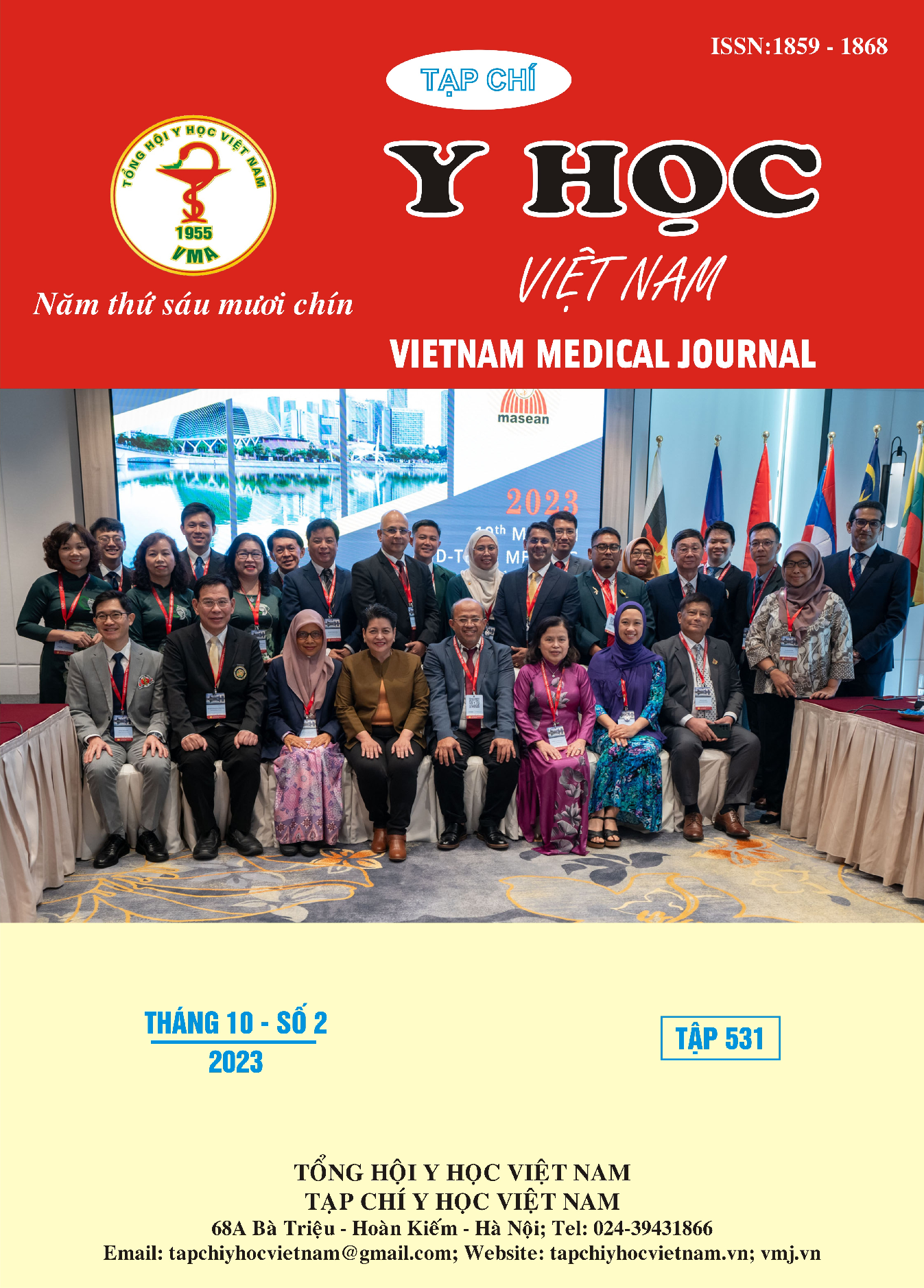ASSESS THE FRAILTY SYNDROME USING THE SEGA SCALE IN ELDERLY PATIENTS WITH ACUTE ISCHEMIC STROKE AT BAC GIANG GENERAL HOSPITAL
Main Article Content
Abstract
Objective: Assess the prevalence of frailty syndrome (FS) and related factors in elderly patients with acute ischemic stroke. Subject and methods: A cross-sectional descriptive study was conducted on 197 patients aged ≥60 diagnosed with acute ischemic stroke, admitted within 72 hours from symptom onset, and treated at Bac Giang General Hospital. The status of FS was assessed using the SEGA scale. Results: The participants had a mean age of 77.9±9.0, with females accounting for 53.6% and predominantly from rural areas (74.6%). According to the SEGA scale, the prevalence of FS in patients was 86.3% (28.9% with mild FS and 57.4% with severe FS). No statistically significant correlation was found between FS and the treatment method. Female sex, older age, lower BMI, more comorbidities, higher stroke severity (higher NIHSS scores), and longer hospital stays were significantly associated with a higher prevalence of severe FS. Conclusion: The prevalence of FS in elderly patients with acute ischemic stroke at Bac Giang General Hospital is relatively high. FS is associated with age, gender, BMI, comorbidities, stroke severity, and longer hospital stays. Early screening and timely implementation of treatment/care for patients with FS are necessary.
Article Details
Keywords
acute ischemic stroke, frailty syndrome, SEGA.
References
2. Hassan EB, Phu S, Warburton E, Humaith N, Wijeratne T. Frailty in Stroke—A Narrated Review. Life. 2021;11(9):891.
3. Evans NR, Wall J, To B, Wallis SJ, Romero-Ortuno R, Warburton EA. Clinical frailty independently predicts early mortality after ischaemic stroke. Age Ageing. Jul 1 2020;49(4):588-591. doi:10.1093/ageing/afaa004
4. Hsieh C-Y, Chen C-H, Li C-Y, Lai M-L. Validating the diagnosis of acute ischemic stroke in a National Health Insurance claims database. Journal of the Formosan Medical Association. 2015/03/01/ 2015;114(3):254-259. doi:https:// doi.org/10.1016/j.jfma.2013.09.009
5. Wæhler IS, Saltvedt I, Lydersen S, et al. Association between in-hospital frailty and health-related quality of life after stroke: the Nor-COAST study. BMC Neurol. Mar 4 2021;21(1):100. doi:10.1186/s12883-021-02128-5
6. Zhang Q, Gao X, Huang J, Xie Q, Zhang Y. Association of pre-stroke frailty and health-related factors with post-stroke functional independence among community-dwelling Chinese older adults. J Stroke Cerebrovasc Dis. Jun 2023;32(6):107130. doi:10.1016/j.jstrokecerebrovasdis.2023.107130
7. Zhang XM, Jiao J, Xu T, Wu XJ. The association between frailty of older stroke patients during hospitalization and one-year all-cause mortality: A multicenter survey in China. Int J Nurs Sci. Apr 2022;9(2):162-168. doi:10.1016/ j.ijnss.2022.02.001
8. O’Caoimh R, Sezgin D, O’Donovan MR, et al. Prevalence of frailty in 62 countries across the world: a systematic review and meta-analysis of population-level studies. Age and Ageing. 2020; 50(1):96-104. doi:10.1093/ageing/afaa219
9. Zhang X, Dou Q, Zhang W, et al. Frailty as a Predictor of All-Cause Mortality Among Older Nursing Home Residents: A Systematic Review and Meta-analysis. J Am Med Dir Assoc. Jun 2019;20(6):657-663.e4. doi:10.1016/j.jamda.2018.11.018
10. Ertel KA, Glymour MM, Glass TA, Berkman LF. Frailty modifies effectiveness of psychosocial intervention in recovery from stroke. Clin Rehabil. Jun 2007; 21(6):511-22. doi:10.1177/ 0269215507078312


